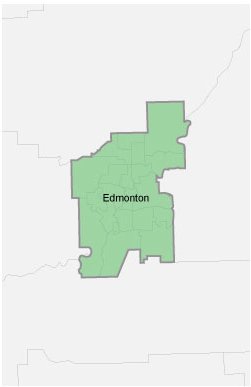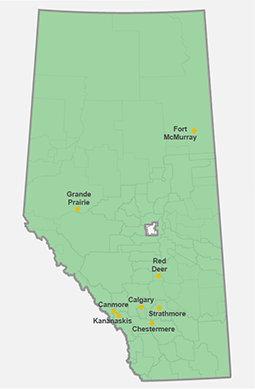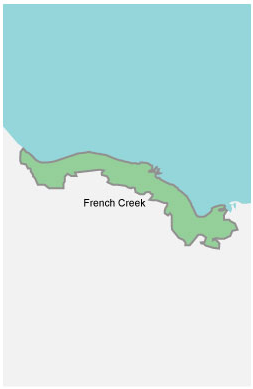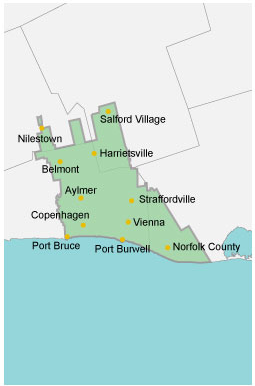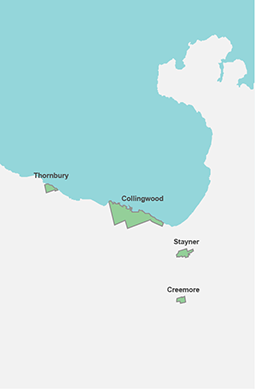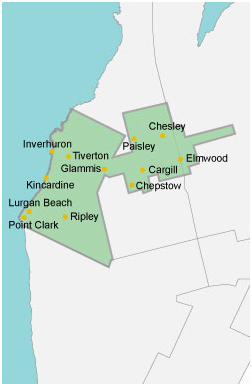Underground
We received inquiries on an underground route option.
In early 2023, we developed above ground route options as they are less costly for Alberta ratepayers, faster to build, and easier to access for maintenance and repairs. However, due to potential technical challenges with the above ground 240 kV line routes options, we developed underground and hybrid route options for consideration.
Property value
We heard concerns that the transmission line would impact property value.
During our conversations with community members, we received questions on impacts to property value. In response to these questions, we hired a consultant to evaluate and prepare a report on the potential effects of high voltage transmission lines on residential property values within the City of Edmonton.
For the Preferred and Alternate 240 kV Routes, the report concluded that since the 240 kV transmission lines will be underground (Preferred 240 kV Route) or mainly underground (Alternate 240 kV Route), it would not result in any property value impacts to adjacent properties. For the above ground portion of the Alternate 240 kV Route, no property value impacts are expected due to the large distance between the above-ground structures and the potentially affected residential properties.
Health and Electric and Magnetic Fields (EMF)
We heard questions on EMF and health.
Power lines use power frequency (60Hz), which is classified as extremely low frequency EMF. This is the same frequency used by most household appliances and the wiring in your home. In Canada, Health Canada monitors the science on electric and magnetic fields (EMF), conducts research on potential health effects, and contributes to the World Health Organization’s research on EMF. The position of Health Canada is: The potential health effects of extremely low frequency EMF has been studied extensively. While some people are concerned that long term exposure to extremely low frequency EMF may cause cancer, the scientific evidence does not support such claims. — Health Canada 2022
To provide additional information, we reached out to a third-party specialist to provide a summary of the research and to develop projections for both aerial and underground options. The results show that the projected electric and magnetic fields for this project are well below the exposure guideline levels recommended for the general public. View additional information by Exponent Health and Scientific entitled Electric and Magnetic Fields and the City of Edmonton Transmission Reinforcement (CETR) project.
Cost
We received questions about increases to power bills and the cost of the project.
The Alberta Electric System Operator oversees the planning, maintenance and operation of the transmission grid and the cost for this is paid for by all Alberta electricity consumers. These costs are identified as the transmission charge on your power bill and includes costs associated with system projects such as the City of Edmonton Transmission Reinforcement Project. To find out more about transmission costs in Alberta you can contact the AESO at 1-888-866-2959 or stakeholder.relations@aeso.ca.
Transmission development is regulated by the Alberta Utilities Commission to ensure reasonable rates along with safe and reliable service. With this in mind, EPCOR plans projects to minimize costs to ratepayers.
Please note, these estimates are provided at a feasibility study level and may change as planning progresses. For this project, it is estimated that an underground 240 kV route would cost approximately $65 million more than an above ground transmission line route. Cost is just one of the factors we consider when selecting preferred and alternate routes. It is also a factor the Alberta Utilities Commission considers when deciding which route to approve.
Safety
We heard general safety concerns, including proximity to Yellowhead Trail and fire risk.
EPCOR puts safety first in everything we do. We are working with the City of Edmonton to identify areas near Yellowhead Trail that may require mitigation measures, such as a barrier system. We will follow all required design guides and roadway requirements.
Specific impacts, including potential traffic disruptions, would be identified ahead of construction. EPCOR will work closely with the City of Edmonton to mitigate construction impacts as much as possible.
We heard concerns about increased fire risk. We do not anticipate increased fire risk as a result of the proposed above ground transmission line. Sparks may occur if vegetation comes in contact with a power line. To prevent this, EPCOR has a tree vegetation maintenance program to ensure branches and other vegetation remains a safe distance from the wires.
Environment
We received questions about potential impacts to the environment and recreational areas.
Environmental assessments for this project are underway to identify potential impacts. These assessments will be used to create an Environmental Protection plan, which contains site specific mitigation measures. We also aim to minimize impacts by identifying route options that follow existing linear developments such as roadways, berms and trails. We heard concerns about impacts to trails and recreational areas. Potential impacts to recreational areas will be assessed to develop the appropriate mitigation measures. We do not anticipate impacts to recreational areas and trails once the transmission lines are constructed.
Maximize distance from residences
We heard feedback to increase distances from residential properties.
We have provided various route options that maximize distances from residences. We worked with the City of Edmonton to find solutions to remain as close to Yellowhead Trail as road allowances and safety would allow.
Noise
We heard questions about noise from the transmission line.
Generally, noise is not noticeable from a 240 kV above ground transmission line. You may hear a faint buzzing noise from the line during rainy weather, however it is typically only audible within the right-of-way corridor. No noise is expected from an underground transmission line.
Visual impacts
We received questions about what the transmission line would look like.
To show what the transmission lines could look like, visual renderings were completed at various points along the route options.
View visual renderings.
